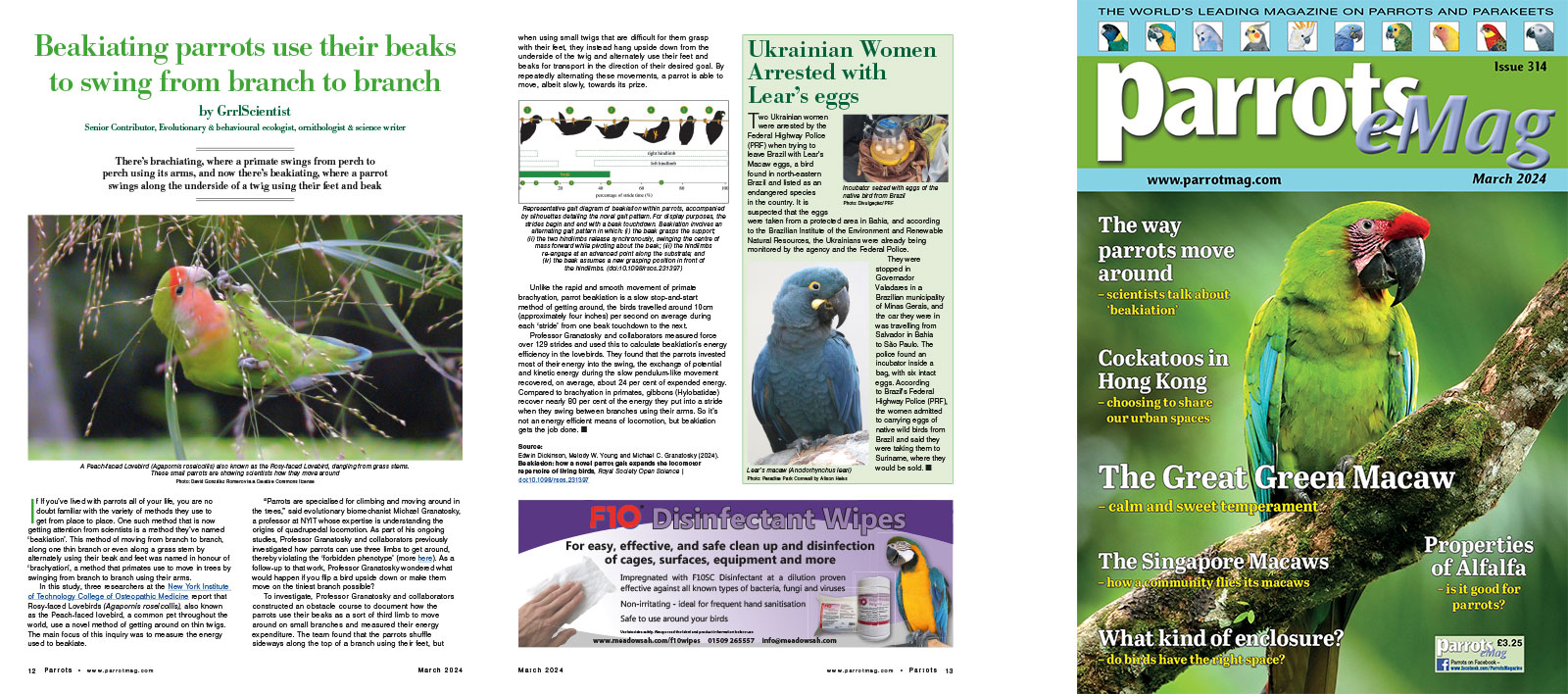
By GrrlScientist, Senior Contributor, Evolutionary & behavioural ecologist, ornithologist & science writer
If you’ve lived with parrots all of your life, you are no doubt familiar with the variety of methods they use to get from place to place. One such method that is now getting attention from scientists is a method they’ve named ‘beakiation’. This method of moving from branch to branch, along one thin branch or even along a grass stem by alternately using their beak and feet was named in honour of ‘brachyation’, a method that primates use to move in trees by swinging from branch to branch using their arms.
In this study, three researchers at the New York Institute of Technology College of Osteopathic Medicine report that Rosy-faced Lovebirds (Agapornis roseicollis), also known as the Peach-faced lovebird, a common pet throughout the world, use a novel method of getting around on thin twigs. The main focus of this inquiry was to measure the energy used to beakiate.
“Parrots are specialised for climbing and moving around in the trees,” said evolutionary biomechanist Michael Granatosky, a professor at NYIT whose expertise is understanding the origins of quadrupedal locomotion. As part of his ongoing studies, Professor Granatosky and collaborators previously investigated how parrots can use three limbs to get around, thereby violating the ‘forbidden phenotype’ (more here). As a follow-up to that work, Professor Granatosky wondered what would happen if you flip a bird upside down or make them move on the tiniest branch possible?
